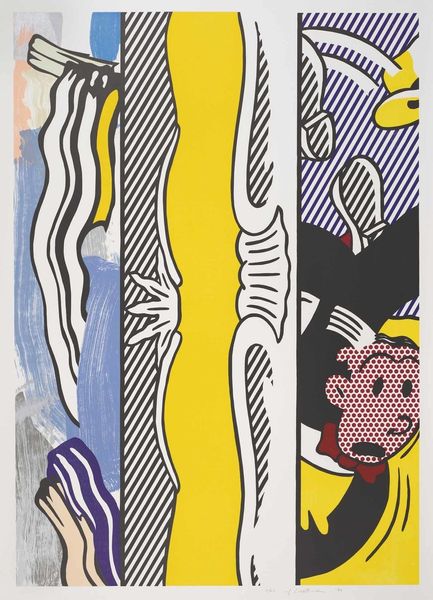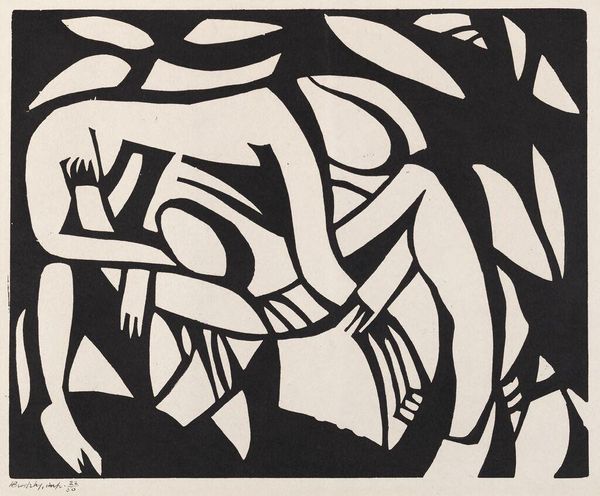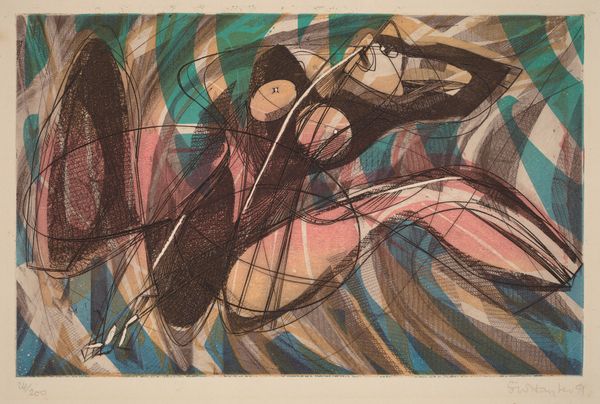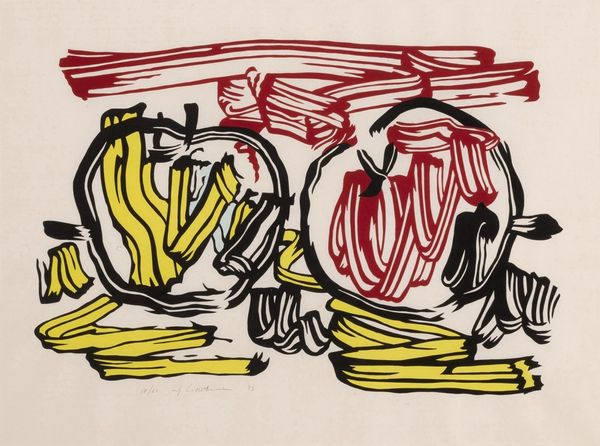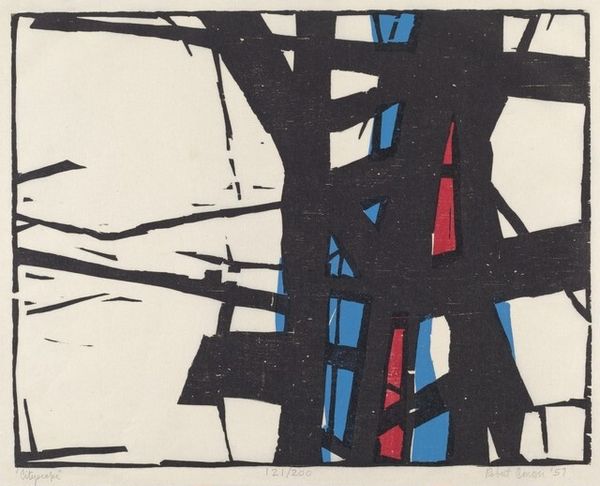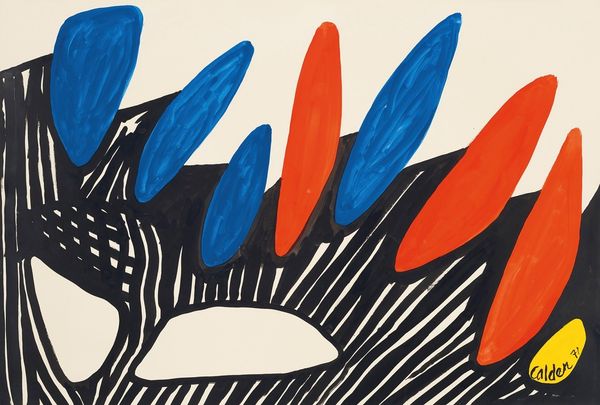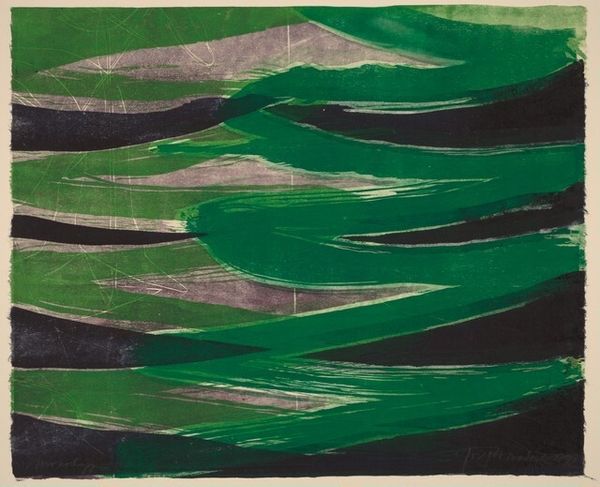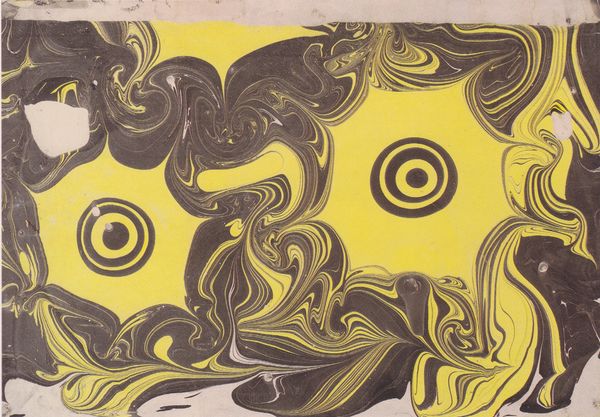
#
pop art-esque
#
cartoon like
#
random pattern
#
cartoon based
#
pop art
#
junji ito style
#
abstract pattern
#
pop-art
#
cartoon style
#
funky pattern
#
reptilian
Copyright: Modern Artists: Artvee
Curator: Welcome. Before us is Roy Lichtenstein’s 1967 work, "Brushstrokes." Editor: It's so energetic! The strokes almost jump off the canvas, with those bold colors and thick outlines. There's a sense of unfinished action, like we caught the painter mid-gesture. Curator: Exactly. Lichtenstein, deeply embedded in the Pop Art movement, was fascinated by the intersection of high and low culture. Consider how he appropriates the Abstract Expressionist gesture—the expressive brushstroke—and transforms it into a mass-produced commodity through his signature Ben-Day dots. Editor: Right. It’s fascinating to consider Lichtenstein lifting from popular culture. His emphasis on Ben-Day dots references his background in commercial lithography. I mean, it completely flattens and re-presents the spontaneous act of painting, essentially mimicking its mass production. Curator: And that flattening serves a critical function. Lichtenstein is commenting on the commodification of art and the role of the artist in a consumer society. The large scale also becomes part of this commentary: the gesture becomes monumental and public. How does one retain authenticity when an act can be so easily reproduced? Editor: The piece also brings up some questions about labor, specifically around reproductive labor and the status of making things at this point in art history. Look at the way he meticulously recreates something seemingly impulsive by hand, or rather, screen printing—making the labor almost invisible yet entirely necessary. Curator: True. The work forces us to acknowledge the changing definitions of value, labor, and authenticity in an era increasingly defined by mass media and consumerism. Editor: It seems that what might appear as random marks hold so much significance in terms of material conditions and even historical weight. Curator: A truly unique take on the language of art. Editor: Precisely. A language constantly molded by the forces around it.
Comments
No comments
Be the first to comment and join the conversation on the ultimate creative platform.

